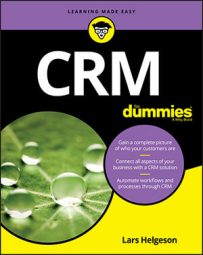Tagging inbound links to automate campaign assignment
Campaign IDs work by either assigning a campaign to individuals when they click a link to your website (for example, http://www.yourwebsite.com/?cmp=GoogleCampaign21) or with a CRM workflow. Then segregate your contacts into subgroups of people who are associated with those campaigns.When you design pay-per-click campaigns, ads to be placed on other websites, or links to your site from social media, be sure to tag as many of those links as possible with unique campaign IDs.
Your CRM uses campaign IDs as a way to segment your contacts. By separating contacts by campaign, you can see how many contacts came from a campaign and how much revenue they generated. When you look at the amount of money you spent on that campaign, you can then easily calculate the ROI of that campaign.
If a campaign is effective (creating positive ROI), that means you should invest more money into it. Invest the most into the best performing campaigns.
Segmenting analytics by campaign
After you have campaign data, study the analytic data to see how well each campaign is performing, and its impact on your funnel.Remember that for campaign IDs to be automatically assigned, you need to ensure that the website analytics functions provided by your CRM are in place.
You can look at a few analytics to get a deeper understanding of what aspects of your marketing are working better.
- Average page views of visitors by campaign tells you which campaigns generate the most traffic on your website after those visitors reach your website. By tracking the average number of page views by campaign, you can see which campaigns drive the most interested leads to you. If you normalize this data with the cost for a click to your website, you can see which campaigns are most cost effective for interested leads.
- Average page views of visitors by campaign by day is a granular look at the traffic your campaigns drive. Sometimes fluctuations in traffic can be attributed to increased spending or competitive ads, so examining sudden spikes or dips in performance from campaigns might illuminate effective or ineffective campaign strategies.
- Funnel performance by campaign is a good way to view the success of the entire customer journey. By examining how effective different campaigns are at converting leads into clients and how long people take to progress through their buyer journeys, you can compare the effectiveness of your campaigns and their strategies. You can see what is working and direct marketing budgets toward better-converting methods of attracting leads.



